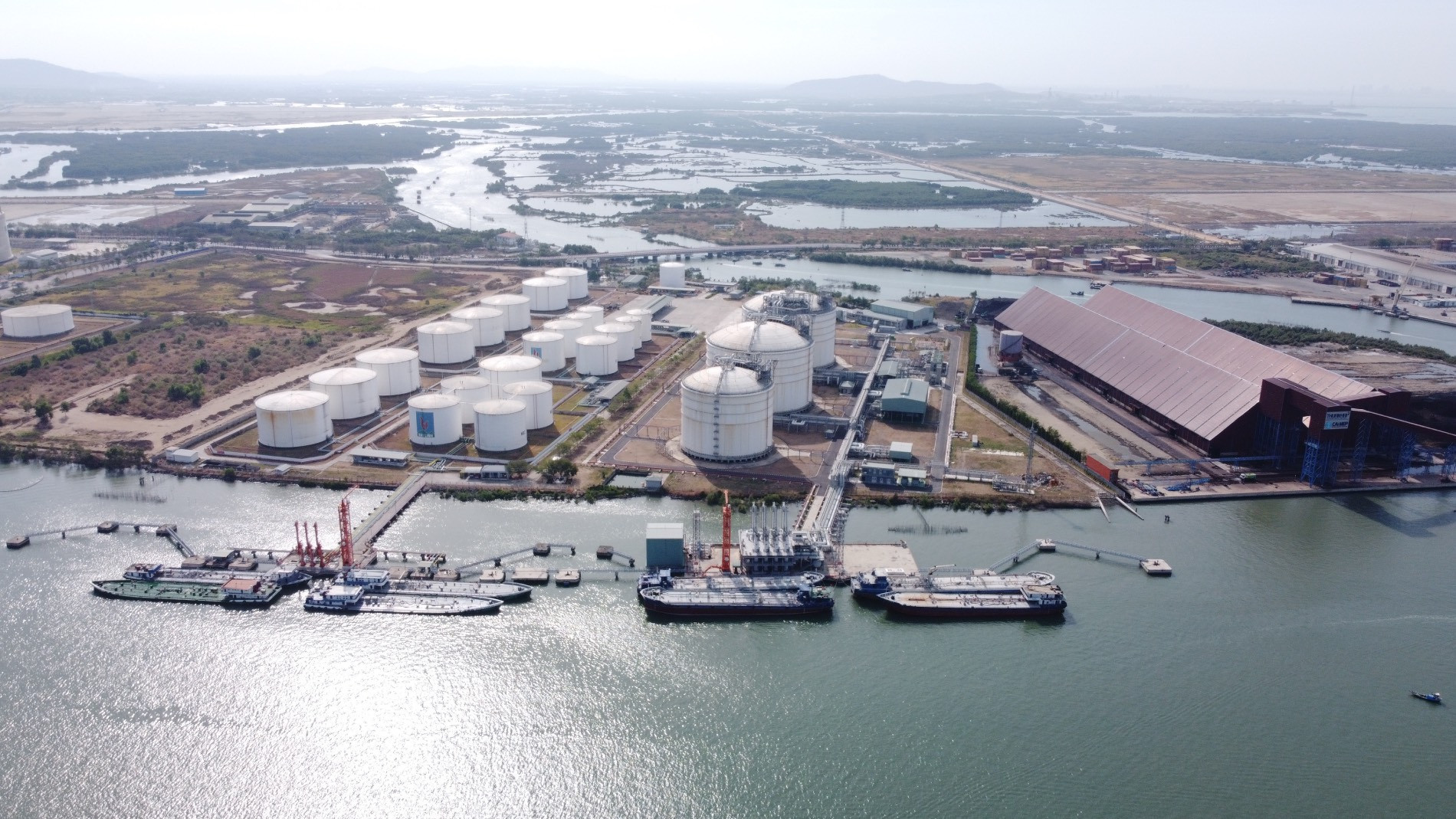
One week ago, Le Van Tam, CEO of Hai Linh Co Ltd, had a meeting with a garment company in Tay Ninh which runs a large factory with thousands of workers, but it is now under pressure when exporting garment products to the European market.
The problem is that its European partners want products manufactured with ‘clean energy’, but the factory is still using coal.
Tam said using LNG is a reasonable choice which suits national commitments on emissions reductions at COP 28, and helps Vietnam’s export companies satisfy requirements on using green energy set by importers.
LNG will also help ease an electricity shortage and CO2 emissions to protect the environment.
The story was related by Tam at an event taking place on March 7, when AG&P LNG, a well known downstream LNG terminal and infrastructure, a subsidiary of Nebula Energy, announced the deal of acquiring 49 percent of shares of LNG Cai Mep dock warehouse in Ba Ria – Vung Tau.
LNG Cai Mep is run by Hai Linh Co Ltd, a big petroleum distributor in Vietnam. A source from the company said the construction of the terminal has been completed and is ready for experimental run before it is put into commercial operation, slated for September 2024.
Potential market
LNG (Liquefied Natural Gas) is a natural gas that is liquefied when deeply refrigerated to minus 162 degrees Celsius after removing impurities. LNG mostly consists of methane, which, when burned, produces CO2 emissions 40 percent lower than coal and 30 percent lower than oil. LNG is the cleanest fuel compared to traditional fuels.
In other countries, LNG has been used for tens of years. In Vietnam, using LNG remains unfamiliar.
Sam Abdalla, CEO of Nebula Energy and Vice President of AG&P LNG, affirmed that Nebula Energy is the first company to bring LNG to Vietnam and hopes the company will make an important contribution to Vietnam’s go-green process.
The investment value of CaiMep Terminal is estimated at $500 million, while AG&P LNG holds 49 percent of shares.
Commenting about the size of the Vietnamese renewables market, Karthik Sathyamoorthy, CEO of AG&P LNG, said that the potential is great.
The two existing dock warehouses combined still have very small capability compared with market demand, and no new dock warehouse is expected in the next 4-5 years.
Meanwhile, Vietnam has an ambitious plan on shifting to clean energy. The government has released the national energy development plan by 2030 with 10-15 million tons of LNG a year.
Of this, AG&P LNG hopes it will provide 5 million tons, starting with cooperation with Hai Linh, and then other power plants in Vietnam. It is also considering to build another LNG dock warehouse in the central region of Vietnam, together with Hai Linh.
Green standards
Tam of Hai Linh said this is the first joint venture between a Vietnamese business and a foreign partner in the LNG market in Vietnam. He believes that cooperation will accelerate the port and LNG dock warehouse, as well as satisfy the high demand for LNG in Vietnam.
LNG Cai Mep dock warehouse is connected with the complex of largest power plants – Phu My Industrial Zone (IZ) – with the capacity of 3.9GW. The port is located on a strategic position near Mekong Delta. There are three onshore basins with containing capacity of 220 cubic meters of LNG. There is also a delivery system which can load LNG into tanks and pump LNG to smaller ships.
LNG Cai Mep is located in an advantageous position which connects many highways and can be a reliable source of LNG supply to power plants and industries in the south.
Analysts commented that LNG Cai Mep will play an important role in strengthening Vietnam’s energy security and open a new chapter in Vietnam’s energy transition process.
The electricity demand in Vietnam is increasing together with strong socio-economic development.
Developing coal-fired power plants won’t be a reasonable solution, especially when the world has stopped developing these plants.
Vietnam cannot continue to develop hydropower plants because the potential is getting exhausted. In such conditions, LNG-fired power is the best choice.
PV